Weapons chest found on wreck of 15th-century 'floating castle' sheds light on 'military revolution at sea'
The chest could help archaeologists understand the fire and explosion that sank the vessel.
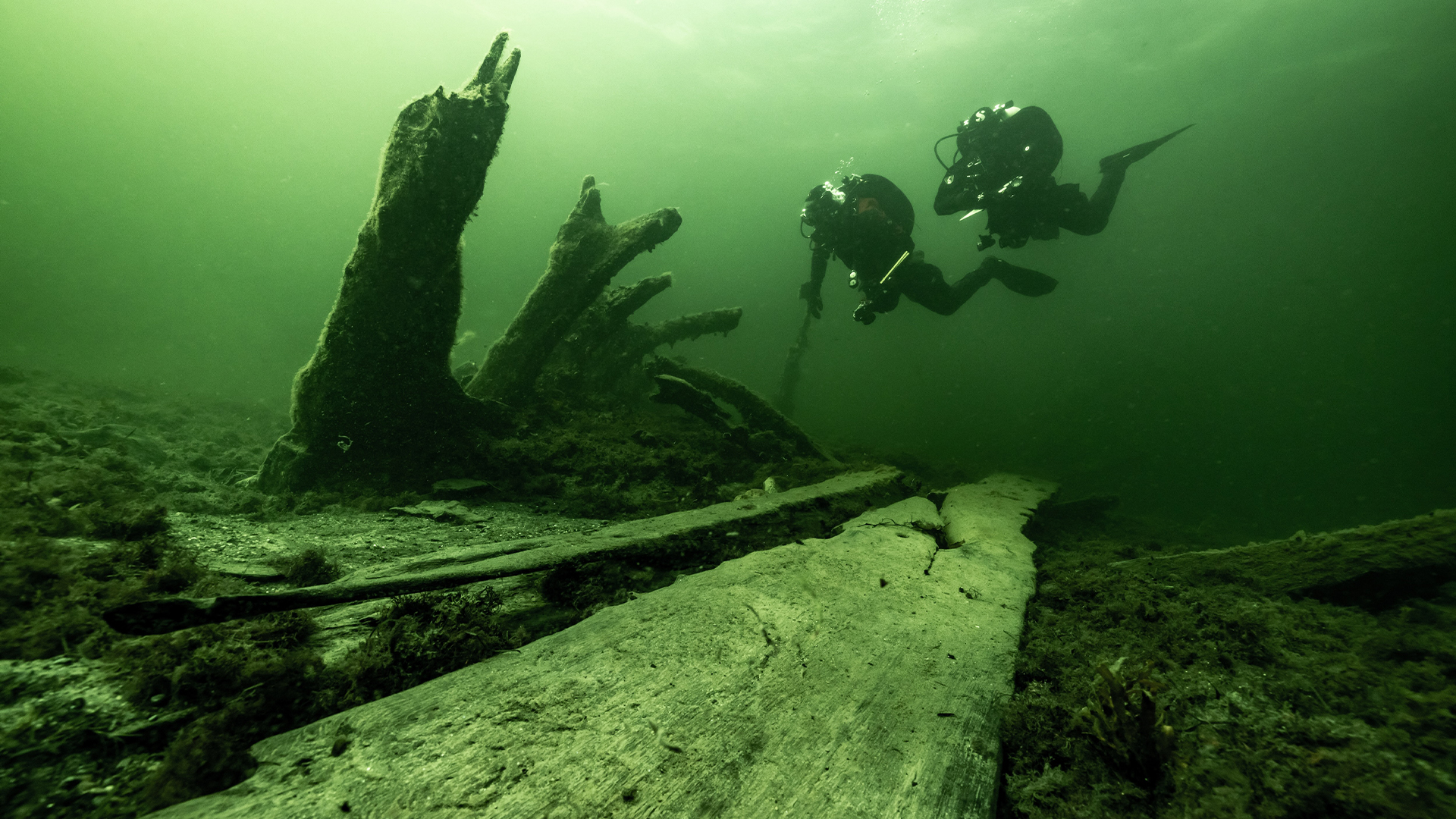
Underwater archaeologists in Sweden have determined that a chest in the wreck of a 15th-century warship held tools to make lead shots for early handguns. The finding hints at key changes in naval battles at the time.
The chest is in the wreck of the Gribshunden ("Griffin hound"), a Danish royal "floating castle" that sank in 1495 at an anchorage in southern Sweden after a fire attributed to the mishandling of gunpowder.
The discovery could shed new light on the fate of the vessel, according to Rolf Warming, a maritime archaeologist and doctoral student at Stockholm University. Warming co-authored a new report on the weapons chest and other new finds from the Gribshunden wreck with Johan Rönnby, a maritime archaeologist and professor at Södertörn University in Sweden. The wreck was discovered by recreational divers in the 1970s, and Rönnby has studied it since 2013.
The discovery also hints at an early development in naval warfare from ramming and engaging in hand-to-hand combat — the tactics used since ancient times — to attacking enemy ships at a distance with gunfire, Warming said. But he stressed that it took more than a century for the development to become widespread.
"This is very much at the beginning of what we call the 'military revolution at sea,'" Warming told Live Science. "The tactics and technology for that were only fulfilled in the second half of the 17th century."
Related: 30 incredible sunken wrecks from WWI and WWII
Weapons chest
Warming and Rönnby used photogrammetry, a technique that involves digitally stitching together photos, to create a precise, virtual 3D model of the weapons chest. The chest is still underwater at the wreck site in coastal islands near the Swedish town of Ronneby, but Warming hopes it will be recovered soon. Conserving its contents will be a lengthy process, he said.
Sign up for the Live Science daily newsletter now
Get the world’s most fascinating discoveries delivered straight to your inbox.
Based on what can be seen in the top layer of the chest, it contained several differently sized molds for the ball-shaped lead shots used in early handguns, plates of lead to be melted down for the molds, and cylinders that appear to have been canisters for gunpowder.
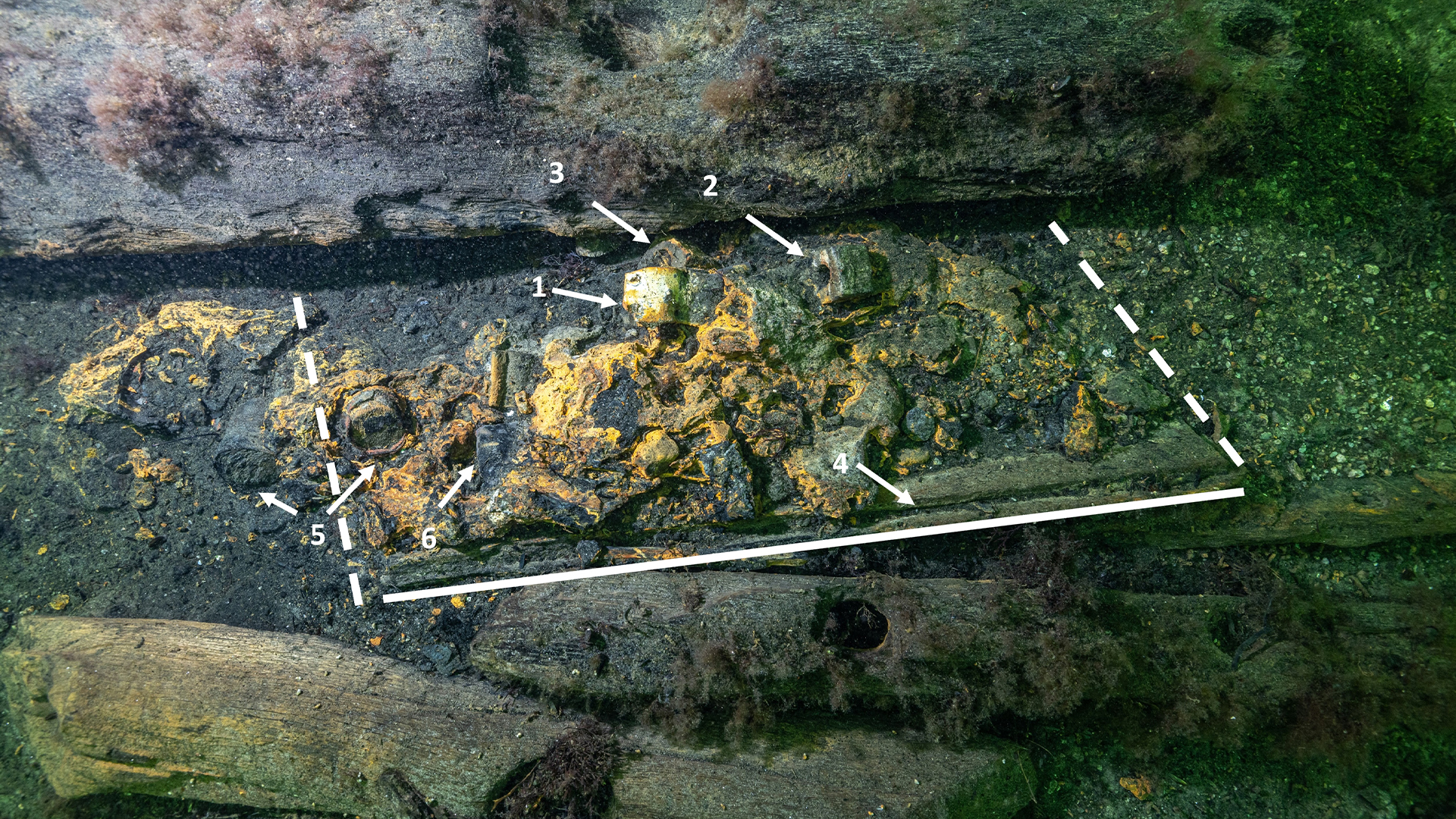
The researchers identified the chest as a "zeuglade," a type of tool chest that was used to make ammunition and which contemporary illustrations show on battlefields of the time.
They think the chest belonged to a company of German-speaking mercenaries on the ship when it sank; and a shirt of chain-mail armor, made of brass in the Bavarian city of Nuremberg in the early 1400s, was found elsewhere on the wreck, Warming said.
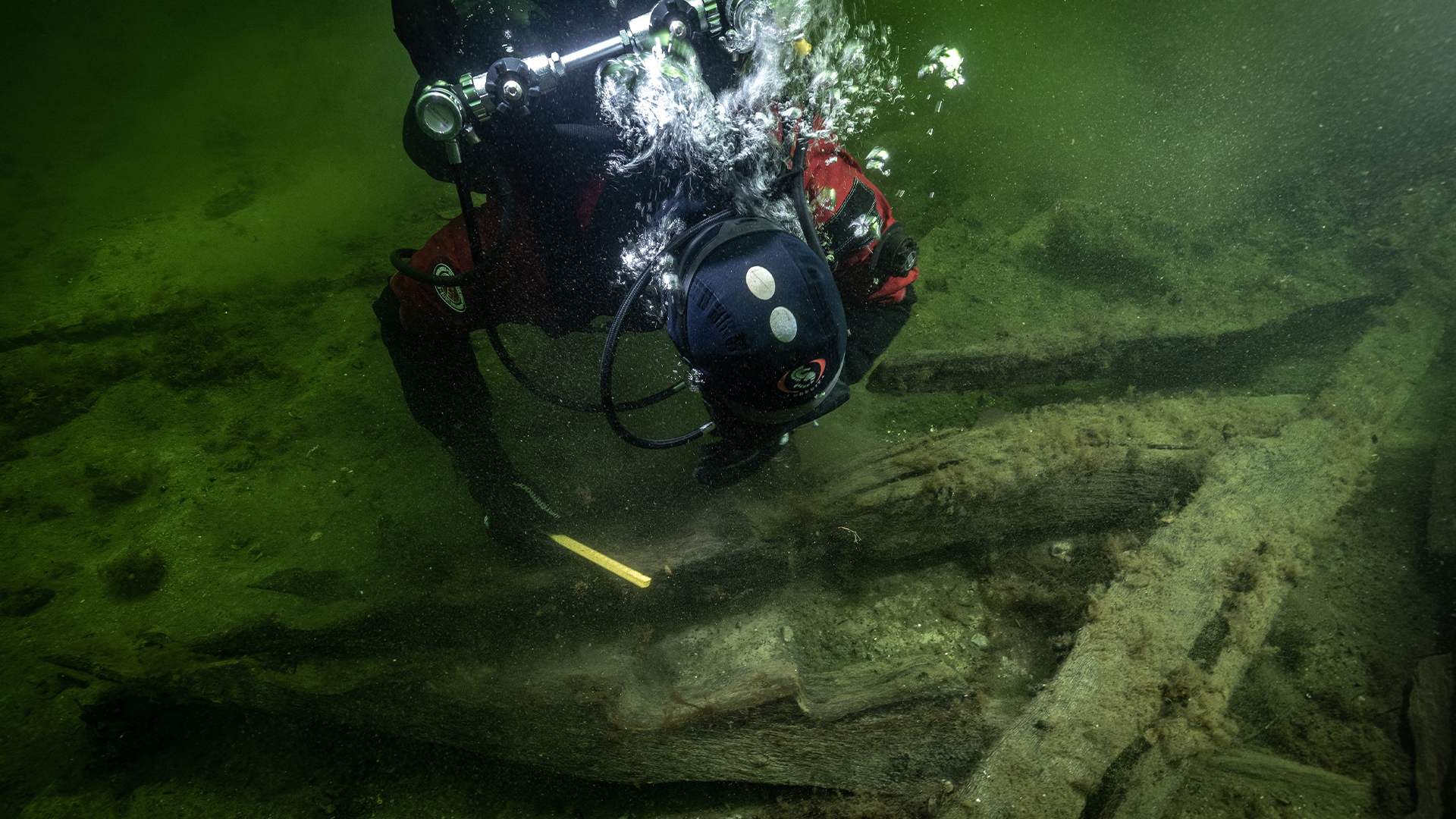
The cylinders in the zeuglade are similar to those known to have stored gunpowder, he said. But it wasn't clear if any powder they held was also used in the ship's many swivel guns, nor whether their mishandling led to the fire and explosion on the vessel — a possibility that was later suggested.
Diplomatic mission
The Gribshunden was the flagship of the Danish king Hans (or John), who was going to the Swedish town of Kalmar when the vessel sank. Hans and his retinue were not on board at the time.
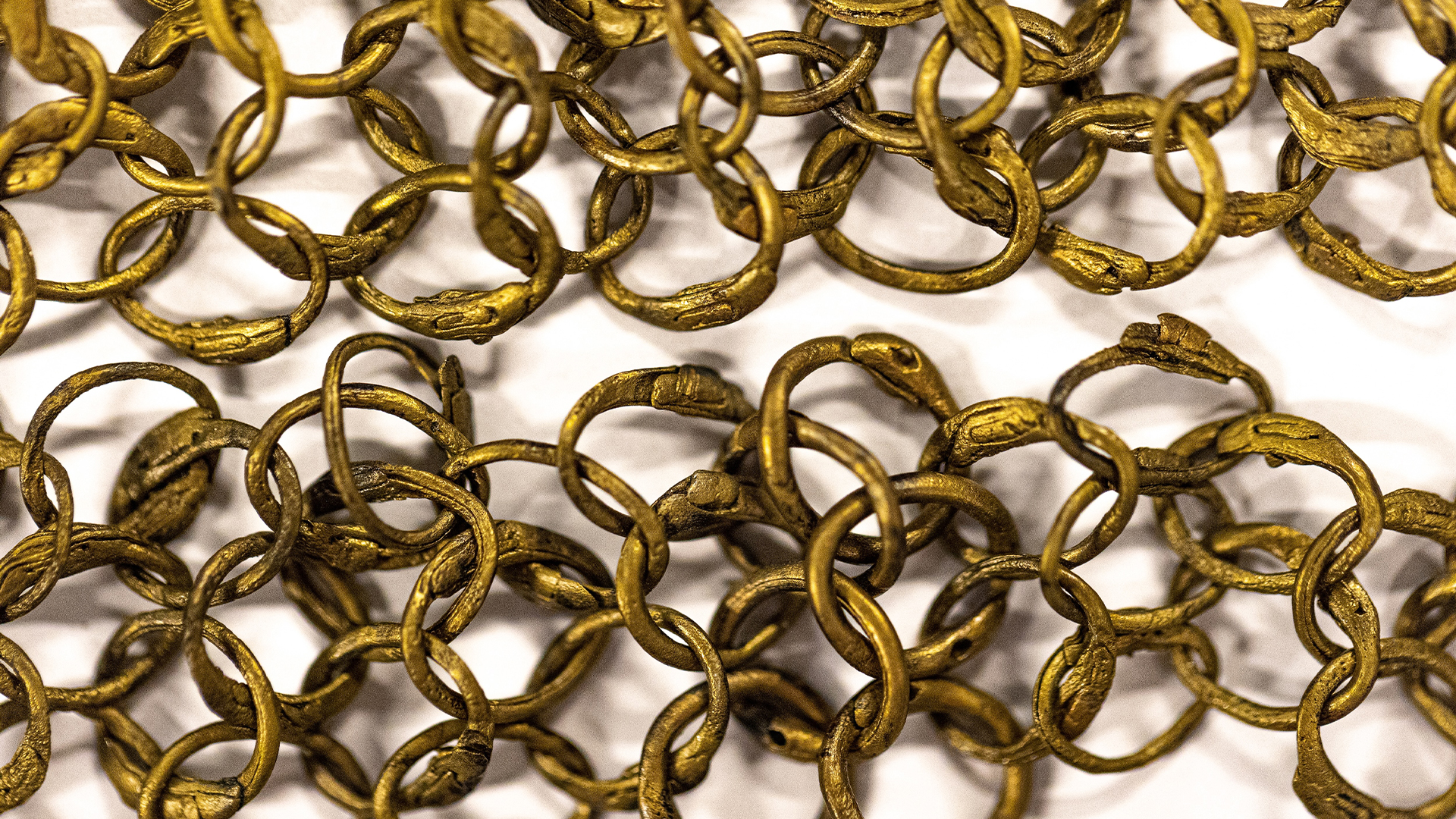
Kalmar had been the site of a 14th-century agreement to unite Denmark, Norway and Sweden under a single monarch, known as the Kalmar Union. But it had fallen into abeyance, and in 1495, Hans had been trying to persuade Sweden to rejoin the union, with Hans as its ruler.
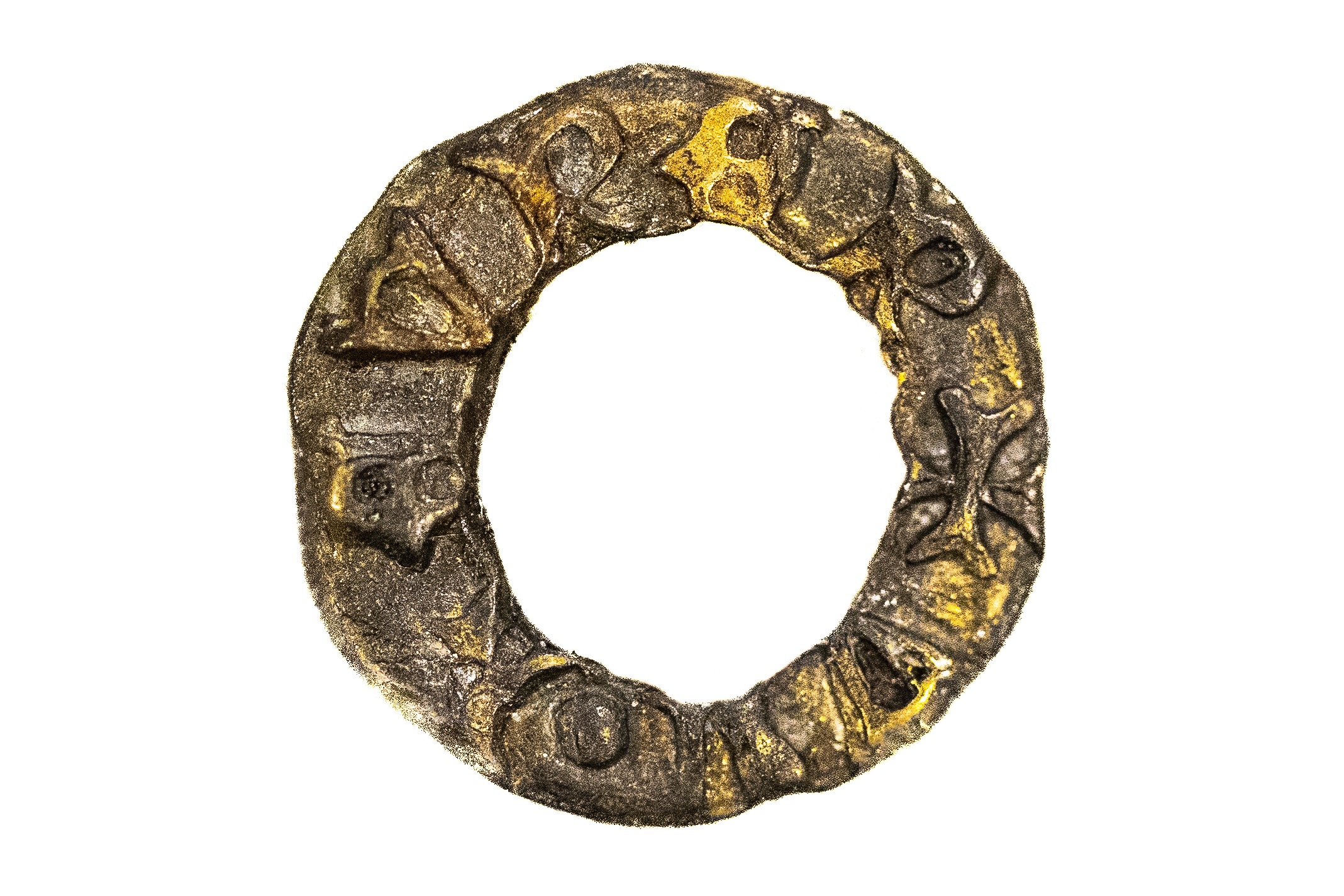
Learning more about the fire that sank the Gribshunden might help resolve lingering questions about it, Warming said. He noted that the ship's diplomatic mission meant there were probably fewer soldiers on board than its full complement in times of war.
Warming and Rönnby also found evidence of "elevated combat platforms" built above the bow and stern of the Gribshunden. The soldiers would have used these platforms during naval battles, perhaps to bombard their enemies with crossbows and firearms.
Such platforms were the origin of the shipboard term "fo'csle," meaning "forecastle," Warming said; and the Gribshunden one of the earliest ships where these platforms had been built into the hull, rather than being added after the ship's construction.
Editor's note: Updated at 9:40 a.m. EDT on April 24 to note that Danish king Hans was going to the town of Kalmar when the vessel sank, not returning from it as was previously stated. Also, that the Gribshunden was one of the earliest ships with a forecastle, not the earliest.
Tom Metcalfe is a freelance journalist and regular Live Science contributor who is based in London in the United Kingdom. Tom writes mainly about science, space, archaeology, the Earth and the oceans. He has also written for the BBC, NBC News, National Geographic, Scientific American, Air & Space, and many others.










